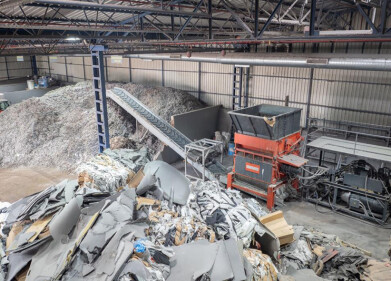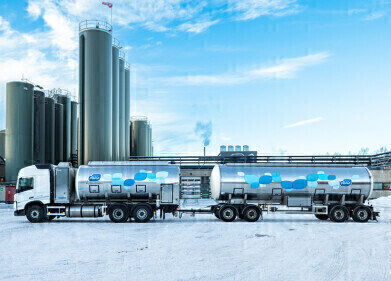Hazardous waste
Scope of the Beckton and Crossness (Thames Water) Advanced Digestion Projects
Nov 18 2012
Tamesis (joint venture between Imtech and Langs) let a subcontract to Cambi (Norway) in July 2012 for the turnkey supply of 2 separate 2x3 reactor B12 Cambi plants, one for Beckton and one for Crossness sewage treatment works. Both plants are expandable to larger capacities in the future. The works will be completed in 2014. Other THP projects with Cambi and Imtech working together are in operation in Cardiff, Swansea (Afan) and Newcastle (Howdon).
Located on the north bank of the river Thames just east of Docklands, Beckton sewage treatment works (STW) was first connected to the London Sewer network in 1850. Today, it serves a population of 3.5 million people and is one of the largest treatment works in the UK. Situated on the south bank of the Thames nearly opposite, Crossness Sewage Treatment Works (STW) serves two million people. The two plants serve the majority of the central and eastern half of London.
The original process at both plants was anaerobic digestion followed by the disposal of the treated digested sludge in the North Sea – feeding fish stocks. In 1998 Thames Water commissioned fluidised bed SPGs (Sludge Powered Generators) to provide an opportunity to generate renewable energy from London’s waste and to comply with EU legislation prohibiting all disposal to sea, both treated and untreated sludge. There is capacity pressure on the SPGs due to growing quantities of sludge from an increasing population and as part of the Thames Tideway project, which will ensure that no sewers are allowed to overflow into the Thames even under storm conditions. Initial plans were to build additional SPG capacity, but research has shown that advanced digestion (Thermal hydrolysis) is able to recover more net energy and is significantly more cost effective.
The chosen method is to pre-treat the secondary sludge with Cambi thermal hydrolysis and anaerobically digest it before making an agricultural grade fertiliser. The upside of this process is that significant renewable energy will be made in the form of biogas that can generate 4 MWelectricity per plant. The final pasteurised biosolids will be dewatered and used in agriculture close to London.
Initially Thames Water has diverted some of Beckton’s sludge to its Riverside plant via an existing pipeline and uses the Cambi digestion process in digesters at that site. As a further stage to providing sludge treatment capacity, Thames has awarded a project to Tamesis for the refurbishment of existing digesters at the Beckton and Crossness sites to treat mainly secondary sludge so that the SPG incinerators will use mainly primary sludge that dewaters well and has high energy content.
Cambi’s THP process has been demonstrated on plants for up to 15 years to be an effective process for the pre-treatment of secondary sludge. The process uses medium pressure steam to cook and solubulise the sludge so that it digests better and that all known disease organisms are killed. It also reduces viscosity, which together with faster digestion, allows for up to three times higher digester throughput, and much better dewaterability. It is now used and selected for over 30 projects worldwide for a population of nearly 30 million equivalents and has become a very popular process in the UK.
Events
May 11 2025 Vienna, Austria
May 18 2025 Algiers, Algeria
23rd International Water Management Exhibition
May 20 2025 Prague, Czech Republic
Singapore International Water Week Spotlight 2025
Jun 23 2025 Singapore
Jun 25 2025 Sao Paulo, Brasil














